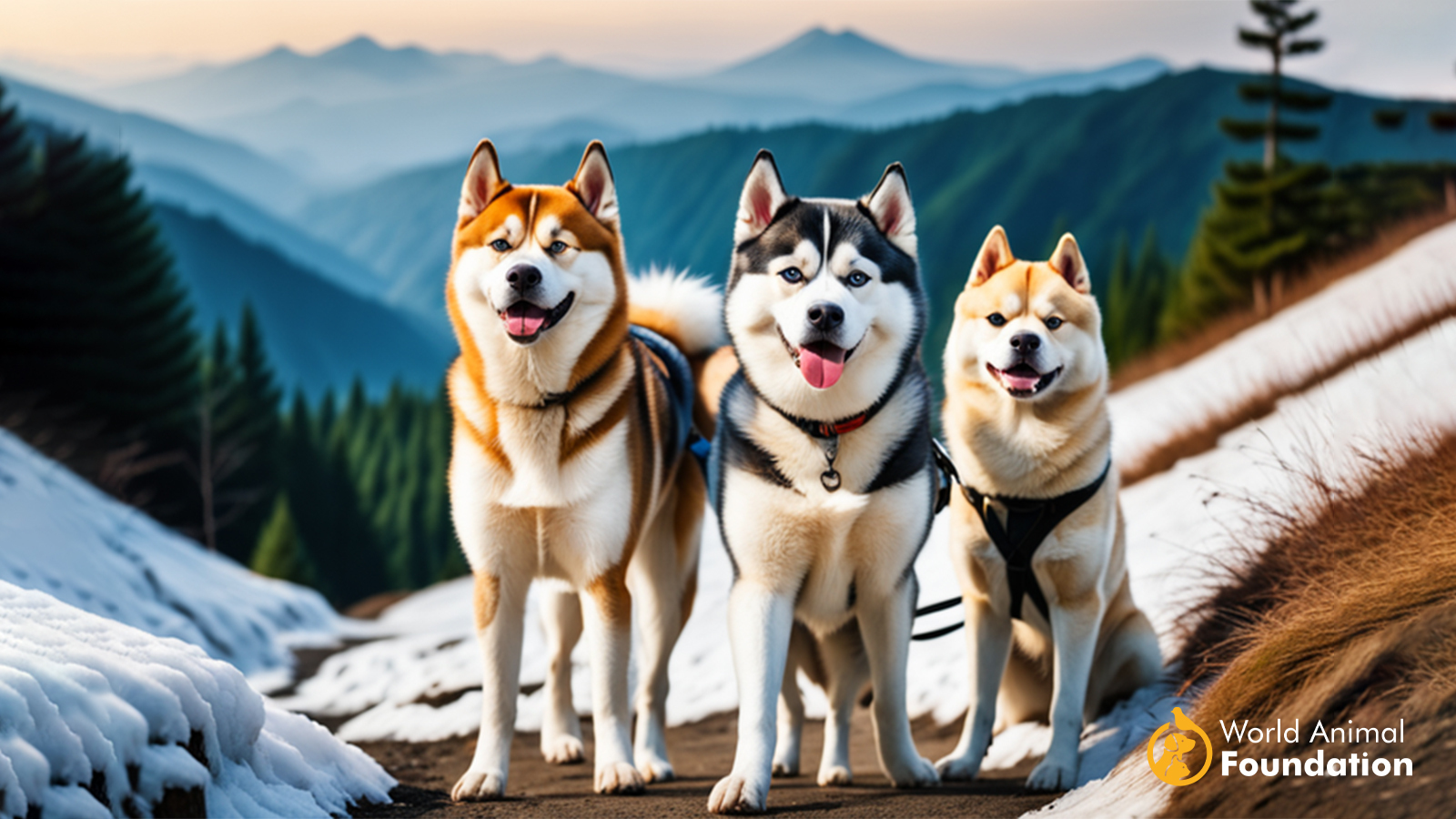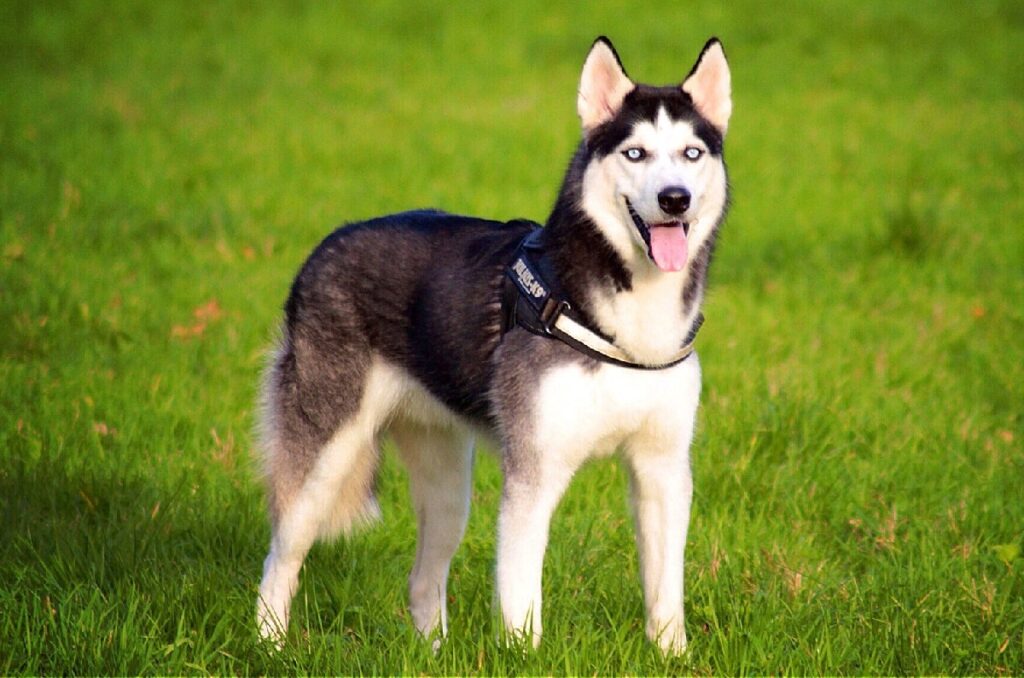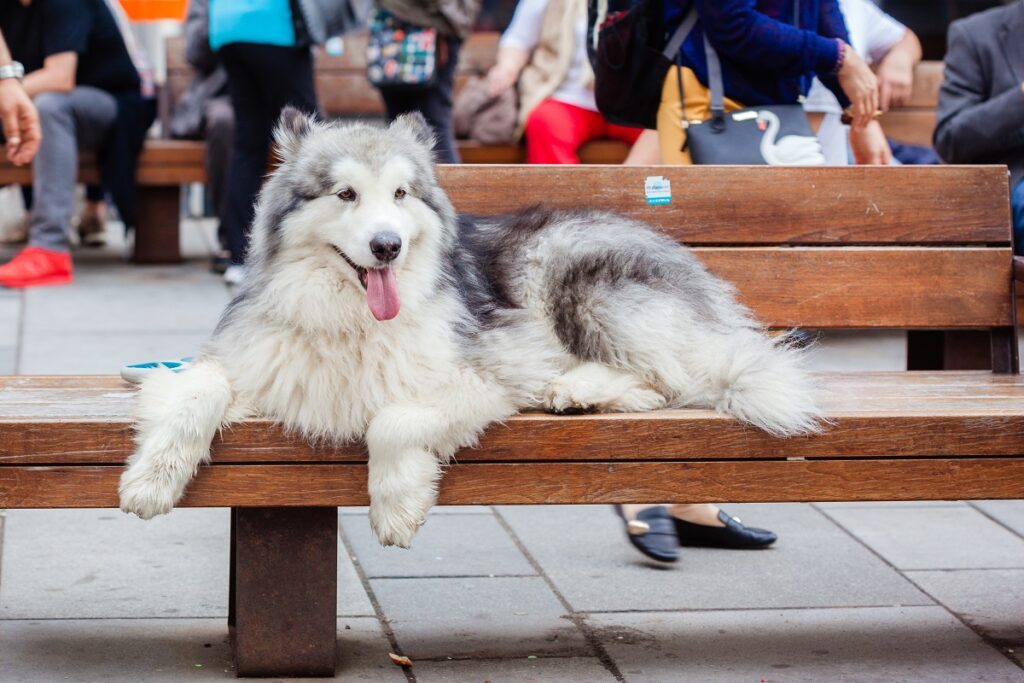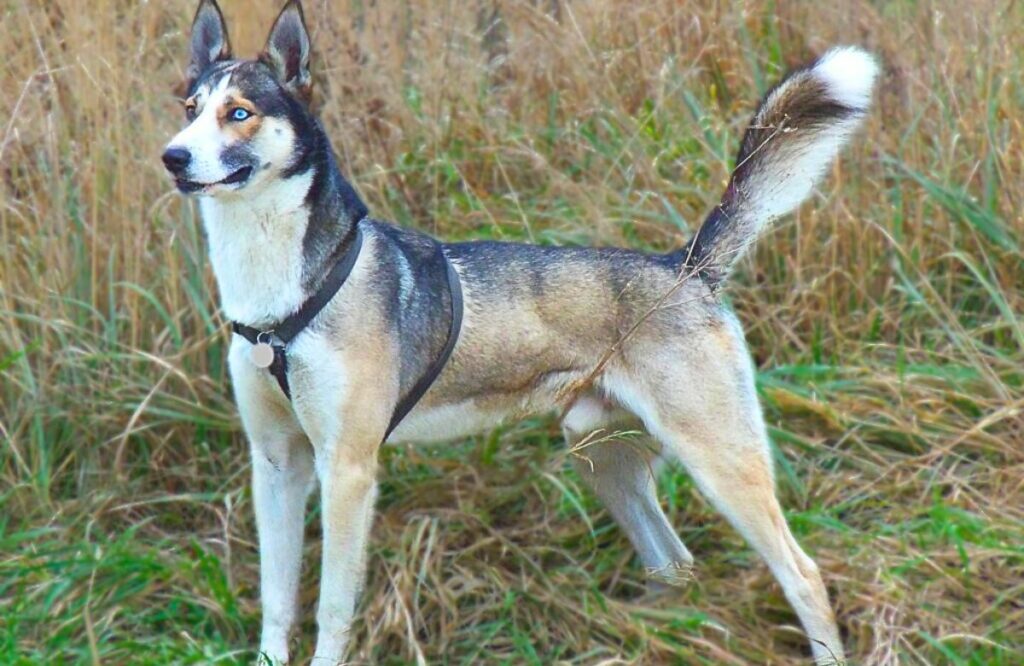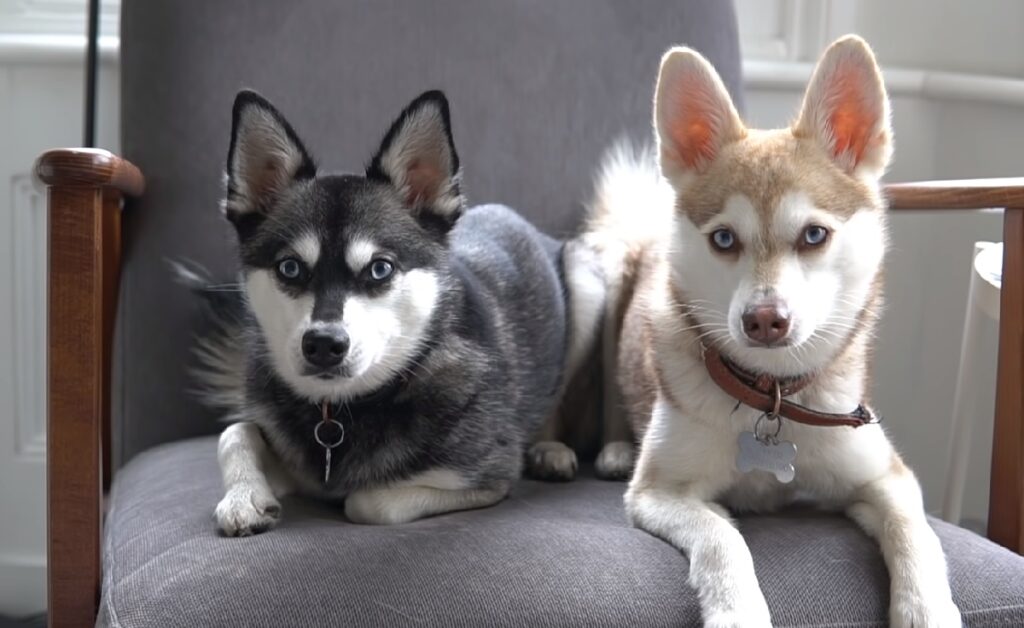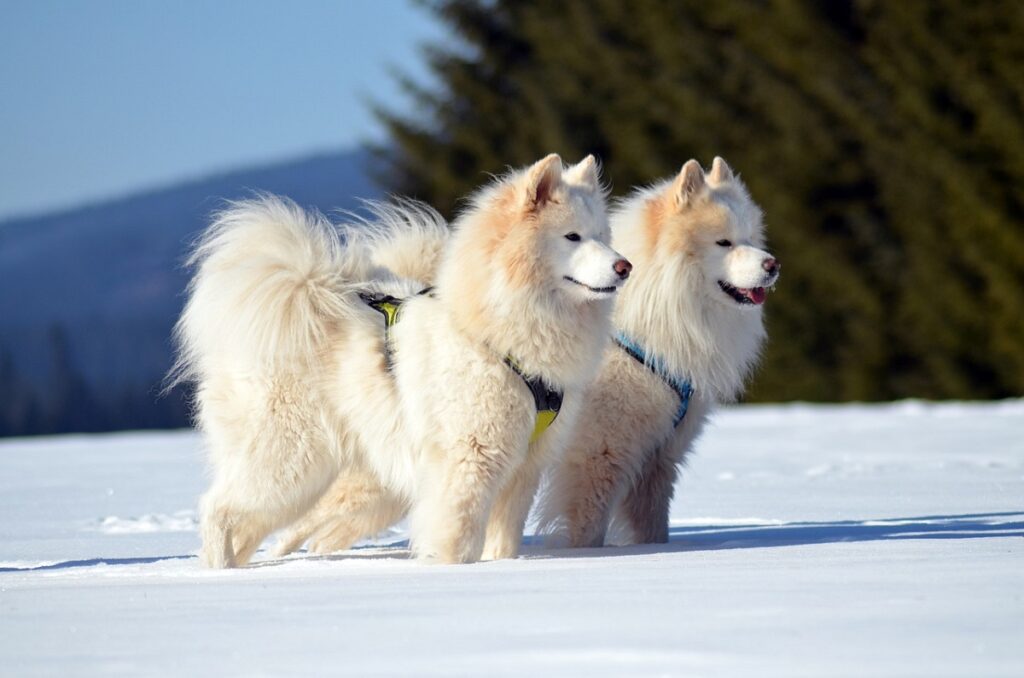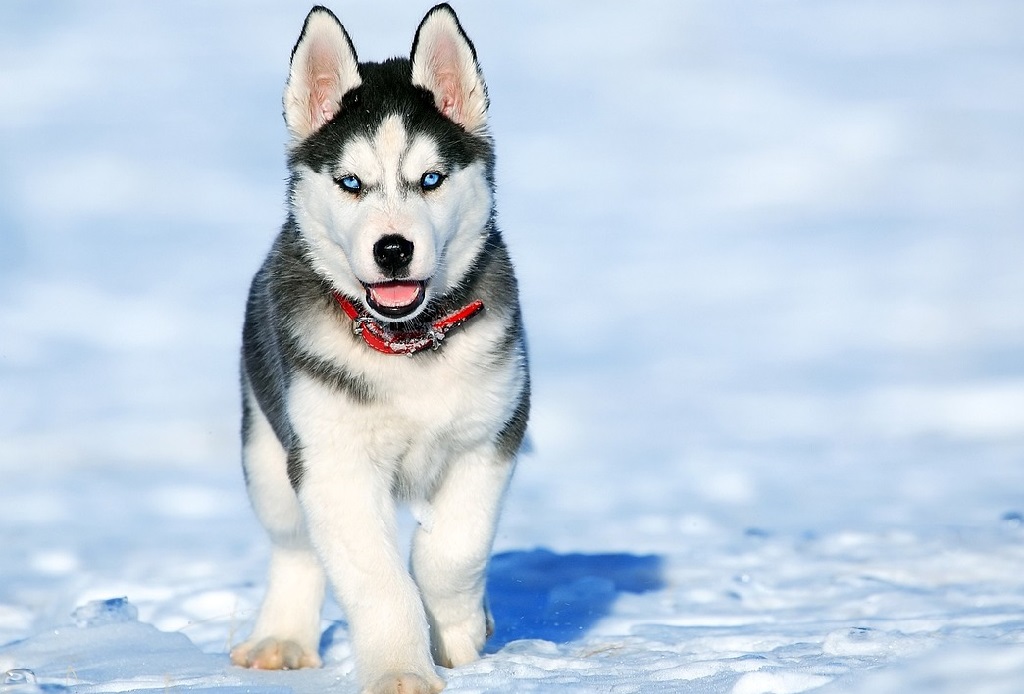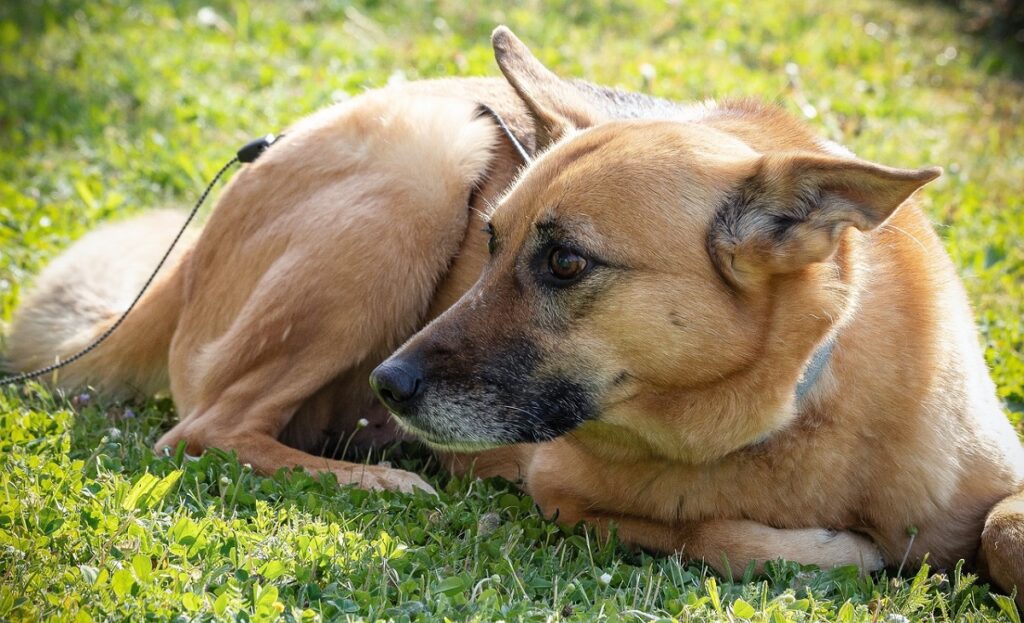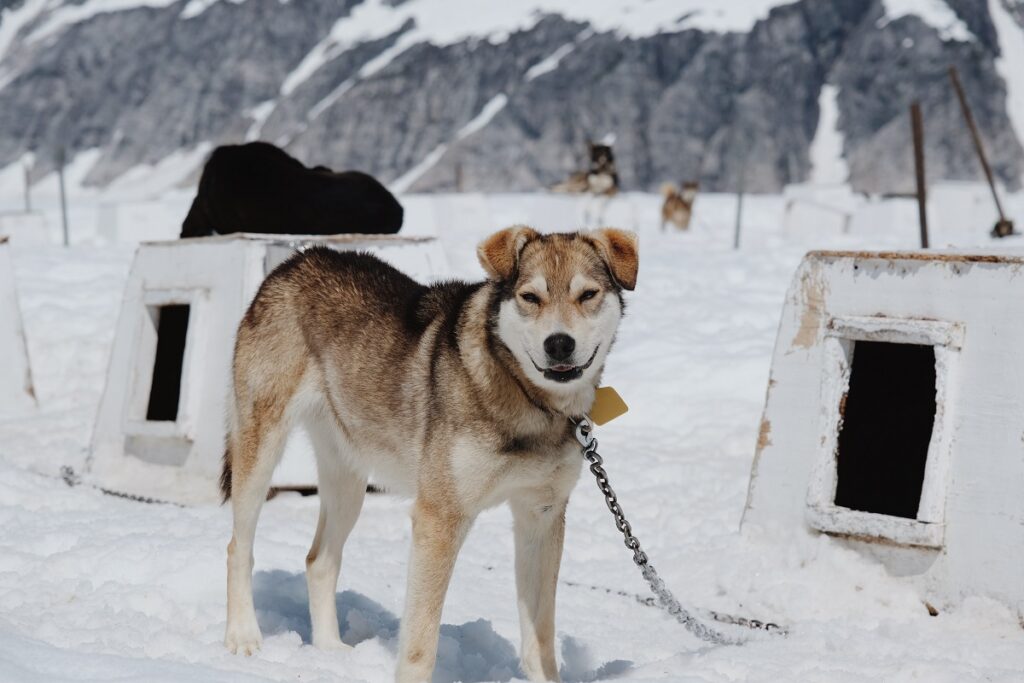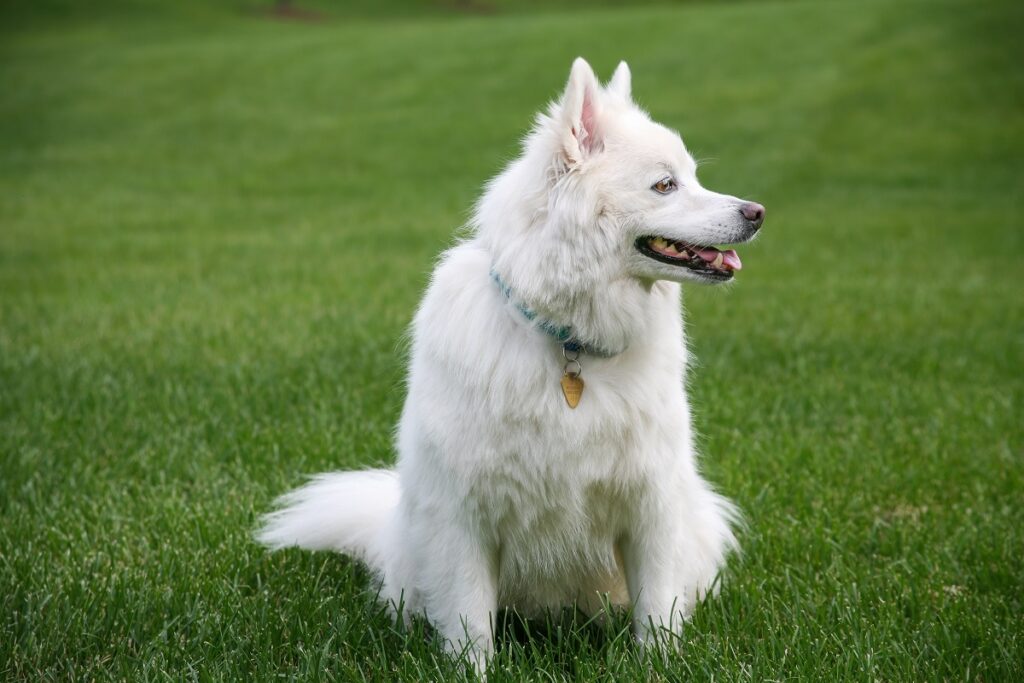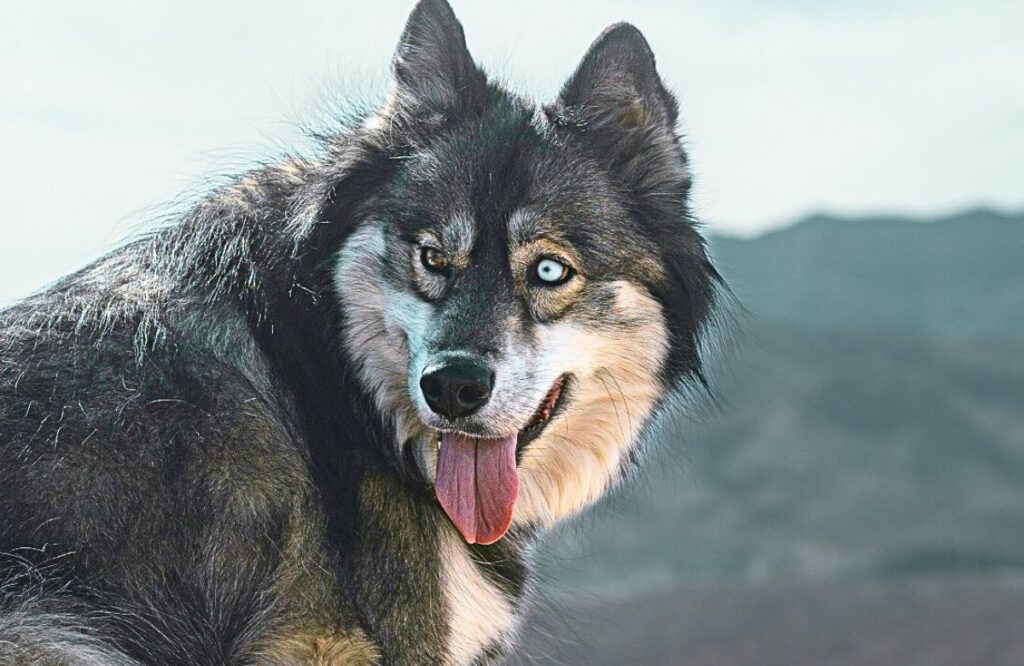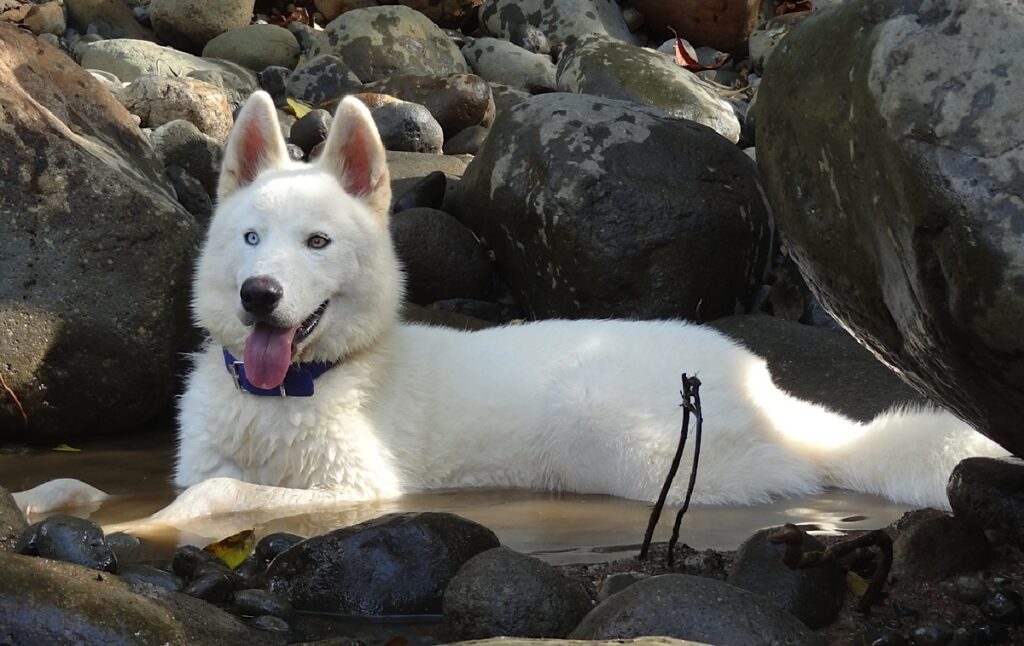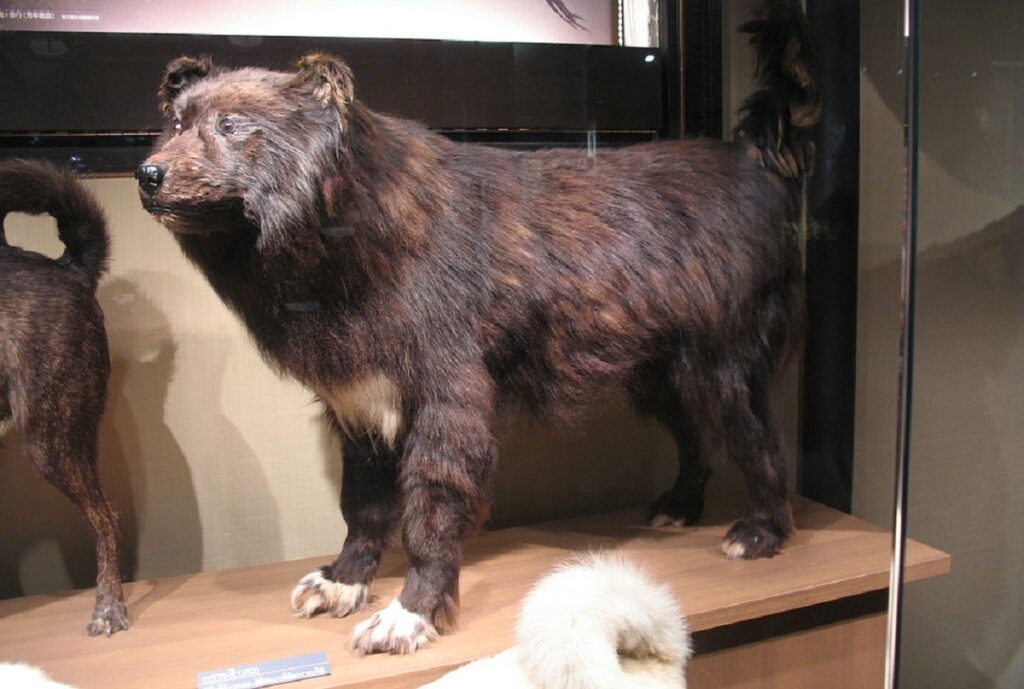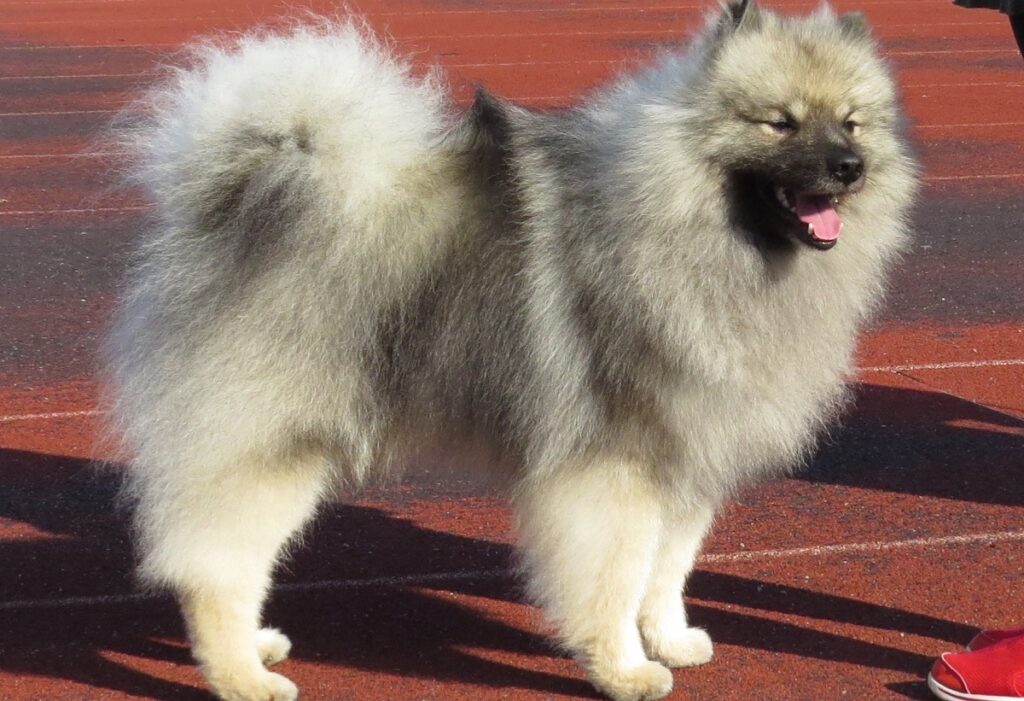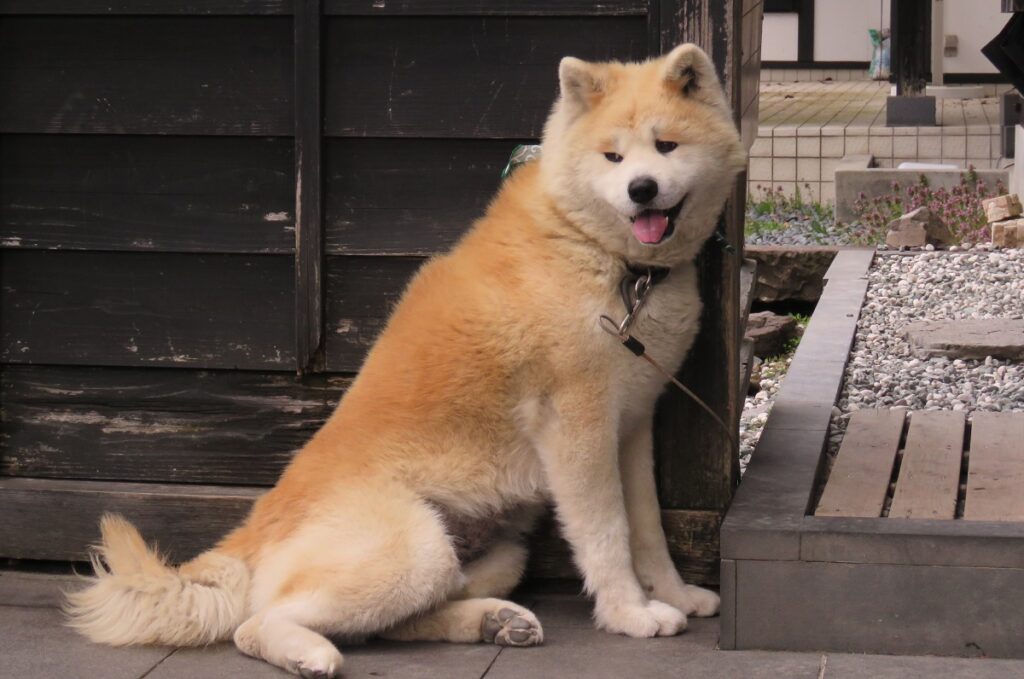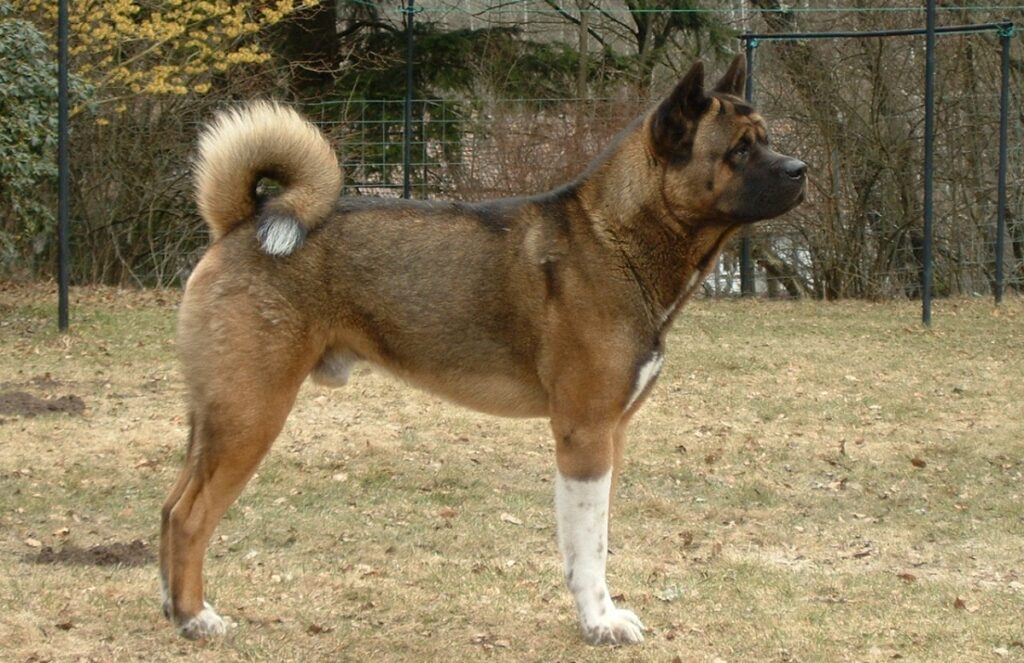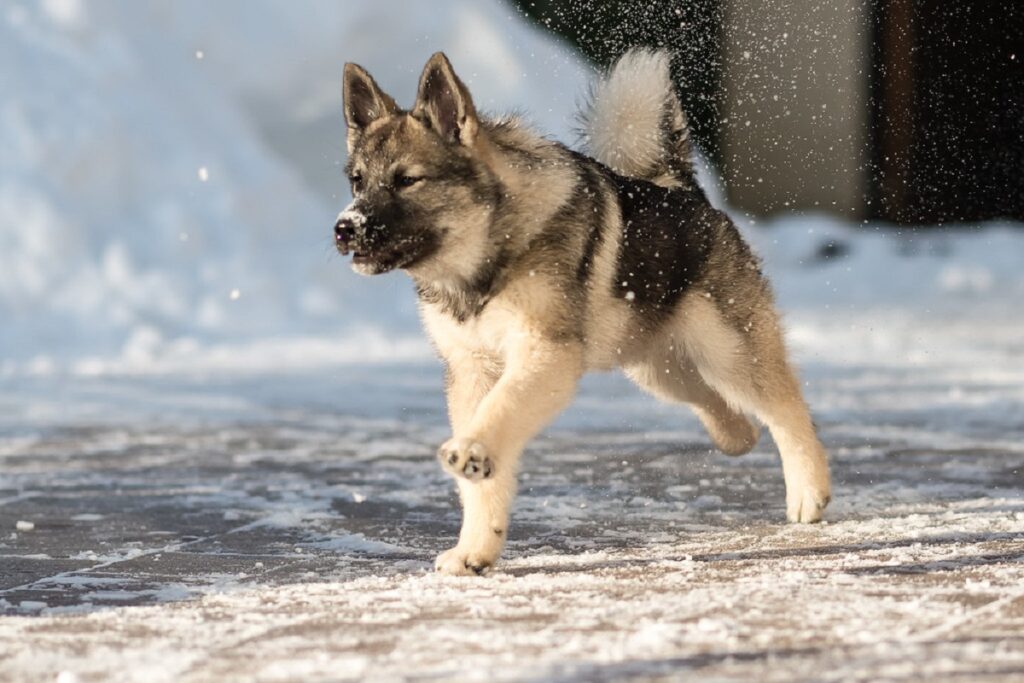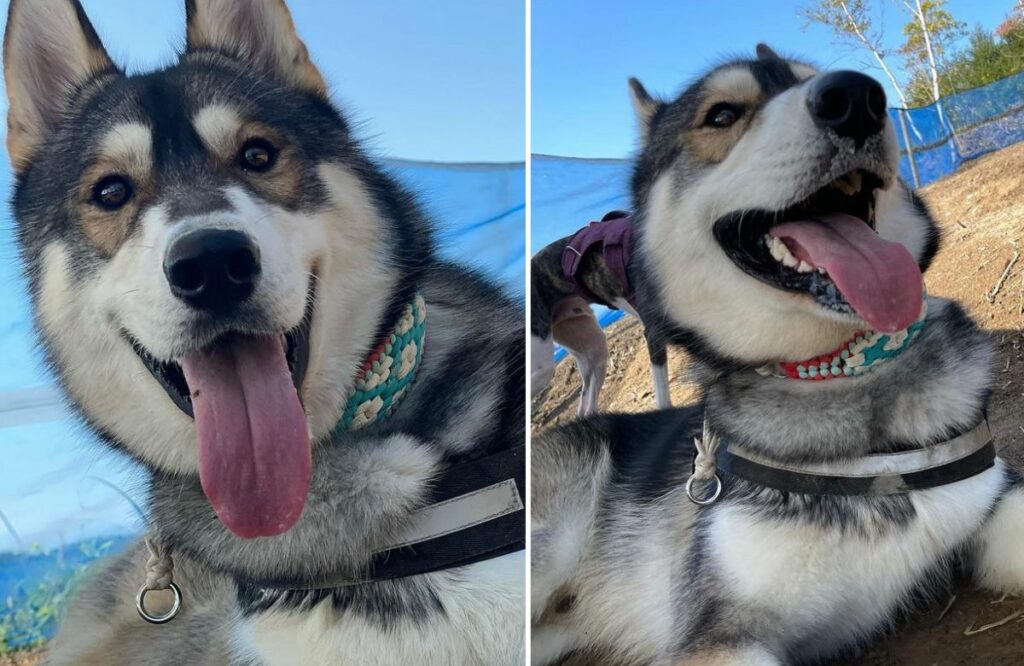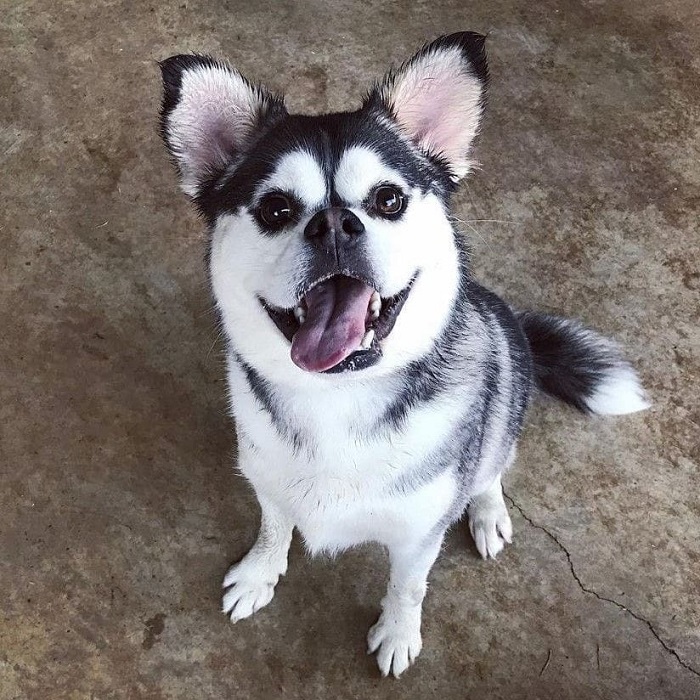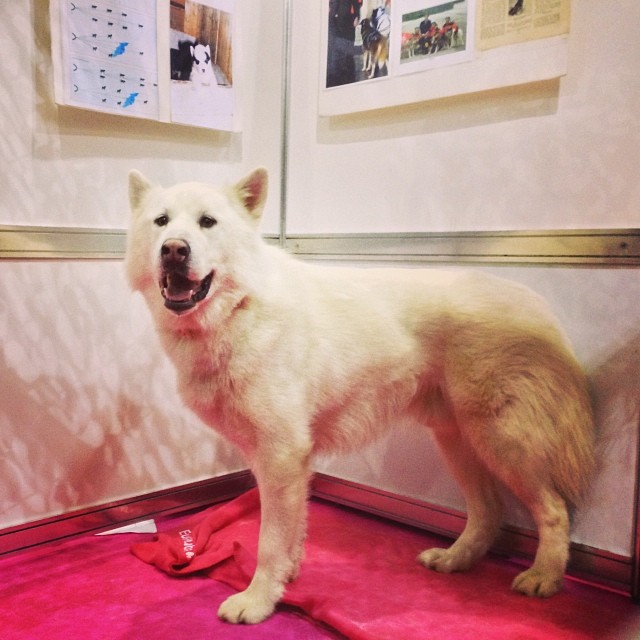The Siberian Husky, with its wolf-like appearance and striking blue eyes, captivates many. But did you know this iconic breed encompasses a diverse range of variations? From the fluffy Alaskan Husky built for endurance to the rare Sakhalin Husky with its ancient lineage, a fascinating world of huskies exists beyond the familiar. This exploration of 22 husky types delves into their unique characteristics, histories, and what makes each one special, offering every dog enthusiast a deeper appreciation for these remarkable canines.
The Husky dog is one of the northern sled dog breeds with a thick double coat that helps protect them from cold weather. Their undercoat is dense and insulating, and the outer coat is water-resistant and straight. They are athletic and comfortable in freezing cold weather, and they resemble wolves.
The Husky Dog was domesticated and bred by the Chukchi people in Northern Asia and is part of the working group. We all owe the Chukchi people a thank you for such a lovely invention.
Although the American Kennel Club only recognizes the Siberian husky breed, there are many other types of huskies. Small huskies are bred to be more compact, hybrid huskies to add physical/emotional traits, and many different color huskies.
Feast your eyes on the many beautiful husky dogs. If you like big fluffy dogs, you’ll love these floofs. Let’s take a look at the husky dog breeds.
Types of Huskies
There are 22 types of husky dog breeds. Many originated in the northern hemisphere and have Husky traits like being energetic, enjoying work, thick double coats, a curled tail, and wolfy prick ears. The different types of husky are similar and also different.
If you’re a fan of these majestic canines, you’ve likely seen the stunning husky shirts that showcase the beauty of these gorgeous dogs. They truly capture the spirit and energy of the husky breed. Now, let’s look at these fluff-sters.
1. Siberian Husky
| HEIGHT | 20-23.5 inches tall |
| WEIGHT | 35-60 pounds |
| LIFE EXPECTANCY | Live 12-14 years |
| COAT AND COLOR | Agouti (dark and wild, wolf-like appearance) and white; black and white; gray and white; red and white; sable and white; white; brown and white; black tan and white; black |
The American Kennel Club-approved husky is the Siberian husky. The Siberian husky is a very popular pure breed because it checks all the family dog boxes: affectionate, great with kids and dogs, friendly, playful, and energetic. The Siberian husky sheds and barks.
Fluffy dogs are gorgeous, but they shed. Barking means good watch dog. They have piercing blue eyes.
Siberians have pointy ears, which are “better to hear you with” (quote the Little Red Riding Hood wolf), are great companion dogs, are strong-willed, and wilt in hot climates because they are from northern Siberia.
They are also military dog breeds. The Siberian husky is one of the most dangerous dog breeds because they need to be trained to quell their strong prey drive.
Siberian Huskies are on our cute dog breeds list as well.
2. Alaskan Malamute
| HEIGHT | 23-25 inches |
| WEIGHT | 75-85 pounds |
| LIFE EXPECTANCY | 10-14 years |
| COAT AND COLOR | Gray and white, black and white, red and white, seal and white, silver and white, white, sable and white, blue and white, agouti and white |
People often confuse the Alaskan Malamute with the Siberian husky. The Malamute is much larger, and the Siberian husky is more agile and pulls lightweight sleds.
The Alaskan malamute was bred for strength to pull sleds with heavy loads. They are good at sled dog racing and stay warm with their thick coat.
These canines from Siberia have blue eyes and are gaining popularity. You can learn more about the beautiful dogs with blue eyes and discover the enchanting allure of these gorgeous canines.
The Alaskan malamute is protective, trainable, loyal, playful, affectionate, and lively. They are stubborn and need training when they are young, but they are excellent companions.
3. Alaskan Husky
| HEIGHT | 23-26 inches |
| WEIGHT | 35-60 pounds |
| LIFE EXPECTANCY | 10 to 15 years |
| COAT AND COLOR | They don’t have standard colors because they aren’t listed by the American Kennel Club (AKC). |
The American Kennel Club doesn’t recognize the Alaskan husky because AKC requirements are that a breed has a minimum number of dogs throughout the US and an established breed club. This medium-sized working dog was bred for pulling sleds and has the endurance for sled dog races.
Alaskan huskies have more stamina for sled racing than Siberian Huskies. Alaskan huskies are nice family pets. They are cheerful, playful, gentle, friendly, loving, and calm.
Alaskan huskies are intelligent but have a stubborn streak. Humans have to teach the Alaskan husky that they aren’t the alpha. They also need exercise because they were bred as sled dogs and have lots of energy.
They don’t like being alone and will howl if you leave them, so you might want to get a companion canine for your Alaskan husky. The modern Alaskan husky are beloved pets and may have descended from working dogs like Siberian huskies, Alaskan malamutes, Saluki, Shorthaired pointer, and German shepherds.
4. Alaskan Klee Kai
| HEIGHT | 12-17 inches |
| WEIGHT | 6-25 pounds |
| LIFE EXPECTANCY | 13-16 years |
| COAT AND COLOR | Black and white, gray and white, red and white |
The Alaskan Klee Kai is an adorable mini husky breed that’s recognized by the American Kennel Club. They are intelligent, loyal, good with other dogs, and vigilant.
The Alaskan Klee Kai’s ancient roots are from many native dogs that have lived in Alaska for thousands of years. They were companions, sled dogs, trackers, hunters, and watch dogs that helped their people survive in the frozen tundra.
Alaskan Klee Kai dogs are also alert, lively, and curious — but reserved with strangers.
5. Samoyed
| HEIGHT | 19-23.5 inches |
| WEIGHT | 35-65 pounds |
| LIFE EXPECTANCY | 12-14 years |
| COAT AND COLOR | White, biscuit, cream, white and biscuit |
Sammies are playful, friendly, protective, affectionate, energetic, and good with kids and dogs. This working dog barks a lot, demands love and attention, and can’t be left alone for hours on end.
Sammies have an adorable, perpetual smile. Their mouth has upturned corners to prevent drooling, which would cause icicles — which we call drool-cicles at my house. They need early socialization.
Sammies originated in Siberia, where the temperatures are minus 60 degrees. The Samoyede people lived in tents and cuddled with their dogs at night to survive. Sammies were used to herd reindeer that their humans needed for food, leather, and fur.
Can you imagine having to survive on reindeer meat and wear reindeer fur and leather? Snuggling sounds nice, but not in a tent in the Arctic region.
They have a thick, soft undercoat with a harsh outer coat and brown eyes. Sammies are prone to hip dysplasia and eye diseases (like corneal dystrophy, glaucoma, cataracts, and progressive retinal atrophy).
Samoyeds are one of the most expensive dog breeds.
6. Miniature Husky
| HEIGHT | 12-16 inches |
| WEIGHT | 15-35 pounds |
| LIFE EXPECTANCY | 12-15 years |
| COAT AND COLOR | Black and white, grey and white, red and white |
Miniature Huskies look like Alaskan Klee Kais but are bred differently. Klee Kais were crossbred in the 1970s from a spitz-type dog.
The Miniature husky isn’t an official AKC breed but is bred from a Siberian husky or Alaskan husky with a small breed like a Pomeranian or Shiba Inu. Mini huskies have brown, blue, or one of each color eyes.
Miniature huskies are lively, social, and boisterous. They need mental and physical stimulus and become destructive when bored. They make a nice companion dog.
7. Chinook
| HEIGHT | 22-26 inches |
| WEIGHT | 50-90 pounds |
| LIFE EXPECTANCY | 12-15 years |
| COAT AND COLOR | Red gold, fawn, tawny, palomino (creme to chestnut), gray red, silver fawn, buff, white, black and tan, gray and tan, black |
Chinooks have short hair, and some colors they come in are very un-Husky-like, so you wouldn’t imagine that they are related to the Husky dog. They make good guard dogs and are patient, calm, eager to please, affectionate, and good with children.
Chinooks are intelligent dogs that were bred in New Hampshire with a mastiff-type dog and descendants of Greenland huskies — far from New Hampshire.
They need exercise and are good at agility, obedience, dog sports, herding, sledding, and carting. They were also rescue dogs. They, like all husky types, need regular exercise to keep them from exhibiting destructive behavior.
8. Labrador Husky
| HEIGHT | 20-28 inches |
| WEIGHT | 60-100 pounds |
| LIFE EXPECTANCY | 12-15 years |
| COAT AND COLOR | Black, white, red and to grey, black and white, grey and white, red and white |
The Labrador Husky isn’t part Labrador Retriever. Labrador in the name refers to them being bred in coastal Labrador. They are a cross of the Alaskan malamute, Siberian husky, Samoyed, and Canadian Eskimo dog by the Thule people around 1300 AD.
Labrador husky is a very powerful breed and a cross between a farm dog and a Husky in Northern Canada.
The Labrador Husky worked hauling heavy loads on sleds. The Inuits bred the dogs with wolves to increase strength, stamina, and intelligence. When the snowmobile was invented, Labrador huskies and other sled dogs lost their jobs of transporting heavy sleds.
Lab huskies are loyal, strong, energetic, playful, good with children and dogs, intelligent, and dedicated to their people. They have a strong prey drive, so their owner has to establish dominance to keep them calm.
9. American Eskimo Dog
| HEIGHT | 9-19 inches |
| WEIGHT | 6-35 pounds |
| LIFE EXPECTANCY | 13-15 years |
| COAT AND COLOR | White, white, and biscuit |
American Eskimos come in toy, miniature, and standard sizes. They are friendly dogs that are playful, intelligent, energetic, loyal, alert, affectionate, have an independent streak, are good with kids, and have sweet personality traits. They are usually pure white dogs and engage in excessive barking.
The toy and miniature American Eskimo dogs are good apartment dwellers.
The American Eskimo wasn’t bred by Eskimos. Midwest German immigrants/farmers brought traditions from Germany to the US, including the German Spitz — a Nordic breed — which they used as farm dogs. They were ancestors of the modern Eskimo dogs, so they are great at pulling sleds.
According to the American Kennel Club (AKC), some American Eskimo dogs wound up in traveling circuses, vaudeville troupes, and Wild West showcasing their agility, beauty, and intelligence in trained dog acts.
10. Utonagan
| HEIGHT | 23-30 inches |
| WEIGHT | 65 to 100 pounds |
| LIFE EXPECTANCY | 9-12 years |
| COAT AND COLOR | Silver and white, brown and tan, and other colors |
The Utonagan is a new mixed breed consisting of German shepherds, Siberian Husky, and Alaskan Malamute. They are friendly, intelligent, loving, have a gentle nature, and need physical and mental stimulation.
They suffer from separation anxiety. Long walks and interactive toys will keep them well-behaved. They need socialization and training and to understand that they aren’t the alpha.
Utonagans are not recognized by the American Kennel Club (AKC), so they don’t have breed-standard colors. They are also the rarest breed of husky.
They aren’t optimal for first-time owners because they need firm training. However, they are loyal companions. Unlike many husky dogs, they weren’t bred to pull sleds.
11. Pomeranian Husky
| HEIGHT | 10-15 inches |
| WEIGHT | 20-30 pounds |
| LIFE EXPECTANCY | Estimate 15-15 years (new breed) |
| COAT AND COLOR | Gray and white, black and white, red and white, blue and white, pure white, brown, tan |
Pomeranian Huskies aren’t a registered AKC breed, but they are super cute, and people love them. They are a mix of Pomeranian and Siberian Husky and were developed in 2012.
They are lively, fun family pooches that are great with kids and other animals. The Pomeranian husky can be long-haired or short-haired, depending on which parent’s genes dominate.
They are rare, make excellent family pets, and need a lot of exercise.
12. White Husky
| HEIGHT | 20–24 inches |
| WEIGHT | 35–60 pounds |
| LIFE EXPECTANCY | 12–15 years |
| COAT AND COLOR | White, yellow, cream |
A true white husky is the rarest type of husky breed. They are friendly, intelligent, stubborn, affectionate, great family pets, and like kids and dogs. White huskies have a high prey drive, will escape if given an opportunity, and need a lot of exercise.
White Siberian huskies need to be trained because they are big dogs. The pure white husky enjoys cold climates and doesn’t like being alone.
The white husky is distinguishable from a Samoyed because the husky may have blue eyes. They were bred for sledding. The only way to breed white husky puppies is to breed two white huskies.
13. Agouti Husky
| HEIGHT | 20-23.5 inches |
| WEIGHT | 35-60 pounds |
| LIFE EXPECTANCY | 12-14 years |
| COAT AND COLOR | Black, tan, white, salt and pepper |
The Agouti husky has a lot of dark coloring and looks like a wolf. They are very friendly, playful, affectionate, lively, like kids and other dogs, and enjoy letting out a big howl.
Agouti means dark and banded color, and banded refers to hair that has different colors on it. They enjoy being a family member and like having a job to do. The Agouti has a high prey drive.
This husky also has lots of energy and needs exercising and training. They have a wolf-like appearance.
14. Sakhalin Husky
| HEIGHT | 22-26 inches |
| WEIGHT | 66-88 pounds |
| LIFE EXPECTANCY | 12-14 years |
| COAT AND COLOR | Black, russet, biscuit, cream |
These big, fluffy huskies are also called Karafuto Ken. Sakhalin huskies are patient, intelligent, alert, loyal, affectionate, good with dogs and children, and independent. They enjoy working but aren’t terribly interested in pleasing people. Sakhalins don’t like to be alone.
They were bred by the indigenous people of Sakhalin, a Russian island by the Sea of Okhotsk. In 1949, the Japanese ethnic people moved to Hokkaido with their dogs.
They aren’t recognized by any major kennel club and are a nearly extinct dog breed. They originated just north of Japan, near Siberia, in a region now owned by Russia.
The Red Army used them during WW II but killed many of them because they were too expensive for the military to feed.
15. Keeshond
| HEIGHT | 17-18 inches |
| WEIGHT | 35-45 pounds |
| LIFE EXPECTANCY | 12-15 years |
| COAT AND COLOR | Black and silver; gray and black; gray, cream, and black; gray, silver, and black; silver and black; wolf gray and black; black; tawny; silver; white; wolf gray |
The Keeshond is friendly, playful, protective, smart, lively, affectionate, good with kids and dogs, and they are barkers.
They were originally bred in Holland and sailed on Dutch vessels on manmade waterways.
Keeshonds are highly trainable. They are known for their “spectacles,” shadings, and markings around their eyes that look like eye makeup. They are medium-sized dogs with plush coats.
16. Japanese Akita Inu
| HEIGHT | 22.5-27.5 inches |
| WEIGHT | 55-75 pounds |
| LIFE EXPECTANCY | 10-12 years |
| COAT AND COLOR | Brindle, red, and white |
The Japanese Akita Inu is protective, dignified, alert, and aloof. They descended from hunting dogs and are known for their muscular bodies, thick fur, and mental agility.
They shed when they blow coats and also need weekly brushing. Akitas don’t bark a lot, but they are strong-willed.
Akitas are on the most aggressive dog breeds list because they don’t like other dogs, but training can help.
17. American Akita
| HEIGHT | 24-28 inches |
| WEIGHT | 70-130 pounds |
| LIFE EXPECTANCY | 10-14 years |
| COAT AND COLOR | Black; fawn; red; white; brown brindle; red, black overlay; silver, black overlay; brown; black overlay; fawn; black, overlay; red brindle; silver brindle; black, red undercoat; black; fawn undercoat; black brindle; fawn brindle; black, brown undercoat; black, silver undercoat; white, red shading; brown; silver |
American Akitas are playful, protective, lively, very loyal, dignified, courageous, and strong-willed. They differ from their Japanese counterparts in that the American Akita is a bit larger (supersized).
Akitas need training and socializing. They are affectionate and silly with their family. Only imperial families could own these Asian dog breeds in the old days.
There are a bunch of adorable Japanese dog breeds.
18. Norwegian Elkhound
| HEIGHT | 19.5-20.5 inches |
| WEIGHT | 48-55 pounds |
| LIFE EXPECTANCY | 12-15 years |
| COAT AND COLOR | Gray, black, and silver; silver, gray, and black; gray and black; silver and black; black, white, and silver; black and gray; black and silver |
The Elkhound is from Norway and is playful, friendly, protective, intelligent, energetic, affectionate, confident, dependable, athletic, alert, hardy, and needs mental stimulation.
The breed originated in Norway and is muscular with a very thick double coat. Elkhounds were companions of Vikings and are in Norse legend and art.
They spent their time hunting moose and giant elk. They pull sleds, too.
19. MacKenzie River Husky
| HEIGHT | 26–29 inches |
| WEIGHT | 63–104 pounds |
| LIFE EXPECTANCY | 12–14 years |
| COAT AND COLOR | Black, white, and gray; black and white; gray and sable; tan; red; blonde |
The MacKenzie River husky is intelligent, independent, dominant, and trustworthy. MacKenzies aren’t a breed but a type of dog. The various sled dogs around the Arctic regions are referred to by the area they live in.
They were freight and sled dogs who lost their jobs when the snowmobile was invented, causing their population to drop. They descend from Newfies, Staghounds, and St. Bernards.
They make nice pets but have a high prey drive.
20. Shepsky
| HEIGHT | 20-25 inches tall |
| WEIGHT | 45-88 pounds |
| LIFE EXPECTANCY | 10-14 years |
| COAT AND COLOR | Usually, some combination of brown, black, cream, white, red, and blue |
The Shepsky is bred from a German shepherd and a Siberian Husky. They are loyal, very intelligent, alert, and affectionate working dogs. They have a lot of energy and need exercise.
Shepskies have been employed as police dogs, guard dogs, and search and rescue canines and have been involved in military operations. They aren’t a registered AKC breed.
They may have traits from their Husky parent or their Shepherd side and are excellent companions.
21. Hug Dog
| HEIGHT | 16-22 inches tall |
| WEIGHT | 30-60 pounds |
| LIFE EXPECTANCY | 12-15 years |
| COAT AND COLOR | Brindle, silver, gray, black, fawn |
A Hug dog is a mix of a Siberian husky breed and a Pug. They are friendly, stubborn, intelligent, affectionate, playful, and good with children and dogs.
They are a recent hybrid, and their appearances vary. Their face could be pushed in like a Pug’s. Their tail could be straight or curly.
They may or may not have flat ears and/or a mask. The fur is normally longish. Any husky breed needs exercise.
22. Canadian Eskimo Dog
| HEIGHT | 19.5 to 27.5 inches |
| WEIGHT | 60 to 105 pounds |
| LIFE EXPECTANCY | 10-15 years |
| COAT AND COLOR | White, brown and white, gray, gray and white, red and white, and black and white |
The Canadian Eskimo dog is affectionate, eager to please, vocal, protective, lively, loyal, brave, highly intelligent, and gentle. These dogs have been associated with humans for a long time and are, therefore, very affectionate and gentle pets.
They are good with kids and dogs in their pack and like to please their humans but tend to bark. They have a high prey drive and need daily exercise.
Canadian Eskimos come from Siberia and are a wolf-dog breed. Some people consider Canadian Eskimo dogs the same breed as the Greenland dog. They are separate breeds, but the Greenland dog is called the Canadian Eskimo dog. Both are excellent at dog sledding.
FAQ
What Is the Best Husky Dog Breed?
The best husky breed for you is the one that matches your lifestyle and what you want in a pet. If you’re a first-time dog owner and want a husky breed that’s easy to train and not stubborn, the American Eskimo dog could be a great match.
Which Is the Rarest Husky Dog Breed?
There are less than 50 Sakhalin Huskies in the world.
What Is the Most Popular Husky Type?
According to the AKC, in 2022, the Siberian husky scored #21 on the most popular breed list, making them the most popular husky.
Conclusion
There are many different types of huskies of multiple sizes. Most are energetic, and many have a high prey drive. Some don’t like being alone, all need exercise and are gorgeous. They make great pets!
If you do welcome a husky into your family, here are the best foods for Huskies. Also, we like these Husky shampoos.
The husky family encompasses a diverse range of breeds, each with unique characteristics and appealing traits beyond the iconic Siberian. From the fluffy Alaskan Malamute to the smaller Klee Kai, these intelligent and energetic dogs offer a variety of sizes, coat patterns, and temperaments. Whether you’re drawn to the striking appearance of the Sakhalin Husky or the playful nature of the Miniature Husky, understanding the nuances of each type ensures responsible ownership and a fulfilling partnership. Exploring these 22 breeds provides valuable insight for any dog enthusiast looking for a loyal, active companion.

